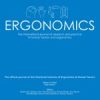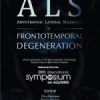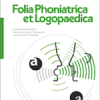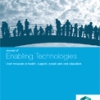The team has published a number of research publications listed below, as well as conference presentations. Publications are related to research projects as studying and evaluating our day to day work as an assistive technology team.

A qualitative study exploring the effect of communicating with partially intelligible speech.
Few studies have investigated how individuals with partially intelligible speech choose to communicate, including how, when, and why they might ...

Finding the best fit: examining the decision-making of augmentative and alternative communication professionals in the UK using a discrete choice experiment.
Objectives Many children with varied disabilities, for example, cerebral palsy, autism, can benefit from augmentative and alternative communication (AAC) systems. However, ...

Professionals’ decision-making in recommending communication aids in the UK: competing considerations
Existing research suggests the provision of communication aids for children with complex communication needs can have significant positive impacts on ...

Decision-making in communication aid recommendations in the UK: cultural and contextual influencers
High-tech communication aids are one form of augmentative and alternative communication (AAC) intervention offered to children following an assessment process ...

Appraising the quality of tools used to record patient-reported outcomes in users of augmentative and alternative communication (AAC): a systematic review
Purpose People who have complex communication needs (CCN), and who use augmentative and alternative communication (AAC) to help them express ...

The language and communication attributes of graphic symbol communication aids – a systematic review and narrative synthesis
Background: Symbol communication aids are used by children with little or no intelligible speech as an Augmentative and Alternative Communication strategy ...

What’s important in AAC decision making for children? Evidence from a best–worst scaling survey
The choice of which AAC device to provide for a child can have long lasting consequences, but little is known ...

Communication change in ALS: engaging people living with ALS and their partners in future research
OBJECTIVE: To involve people living with amyotrophic lateral sclerosis (plwALS) in the scoping and identification of research priorities related to ...

A comfort assessment of existing cervical orthoses
Purpose: Identify location and intensity of discomfort experienced by healthy participants wearing cervical orthoses. Method: Convenience sample of 34 healthy participants ...

Provision of powered communication aids in the United Kingdom
AAC service provision in the United Kingdom (UK) has evolved since the first service dedicated to the provision of communication ...

Local service provision of Augmentative and Alternative Communication and communication aids in England
BACKGROUND: Provision of Augmentative and Alternative Communication (AAC) interventions have been acknowledged to be highly variable in England and elsewhere ...

Communication aid requirements of intensive care unit patients with transient speech loss
Alert and transiently nonvocal intensive care unit (ICU) patients are dependent on augmentative and alternative communication (AAC). Unfortunately, the literature ...

Evaluating a novel cervical orthosis, the Sheffield Support Snood, in patients with amyotrophic lateral sclerosis/motor neuron disease with neck weakness
Current practice and guidelines recommend the use of neck orthoses for people with amyotrophic lateral sclerosis (ALS) to compensate for ...

Prevalence of people who could benefit from augmentative and alternative communication (AAC) in the UK: determining the need
Background: Commissioners and providers require information relating to the number of people requiring a service in order to ensure provision ...

What is the potential for context aware communication aids?
Use of voice output communication aids (VOCAs) can be a very effective strategy to assist people with speech impairments in ...

Head-Up; An interdisciplinary, participatory and co-design process informing the development of a novel head and neck support for people living with progressive neck muscle weakness
This paper presents the Head-Up project, that aims to provide innovative head support to help improve posture, relieve pain and ...

Perceptions of the design of voice output communication aids
Background: Voice output communication aids (VOCAs) are a key form of aided communication within the field of augmentative and alternative communication ...

Interventions Using High-Technology Communication Devices: A State of the Art Review
Background/Aims: In the last 20 years the range of high-technology augmentative and alternative communication (AAC) aids has rapidly expanded. This review ...

Barriers and facilitators to the use of high-technology augmentative and alternative communication devices: a systematic review and qualitative synthesis
Background: There has been a rapid growth in recent years of available technologies for individuals with communication difficulties. Research in the ...

The limitations of speech control: perceptions of provision of speech‐driven environmental controls
This study set out to collect data from assistive technology professionals about their provision of speech‐driven environmental control systems. This ...

Speech-driven environmental control systems – a qualitative analysis of users’ perceptions
Purpose. To explore users' experiences and perceptions of speech-driven environmental control systems (SPECS) as part of a larger project aiming to ...
This publication list is also available as a simple list.